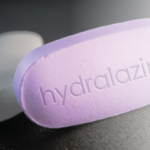Another sign of critical ischemia: pain. “The patient who comes in and says, ‘My whole finger hurts, not just the tip of the ulcer, but the whole finger,’ is in trouble.”

Dr. Rosenbaum
If a patient comes in with an ischemic foot and there’s a concern about big vessel disease, Dr. Wigley suggested elevating the foot. A normal foot will stay pink and won’t hurt, while an ischemic foot will turn white and hurt. “Patients with macrovascular disease like to keep their leg in a down position, so this [is something] you can do at the bedside,” he said.
He said clinicians should always consider macrovascular disease in cases of lower extremity digital ischemia.
Dr. Wigley shared his approach to managing Raynaud’s and digital ischemia. First, stop the aggravating factors, such as cold, trauma, stress and smoking. Then, for Raynaud’s with no ulcers, he’ll use a calcium channel blocker. For severe ischemia with ulcers, he’ll also use a phosophodiesterase-5 inhibitor, typically sildenafil. In even more severe cases, he’ll move to prostacyclin.
He also said not to forget protective agents: “We want to treat more than the vasospasm, we want to treat the underlying problem.”
For a finger or toe with acute ischemia, he said the first step is rest and warmth, followed by controlling pain with a digital nerve block (possibly lidocaine), then a vasodilator, such as a calcium channel blocker or prostaglandins.
‘Do you ever go to funerals of your patients? I went to her funeral.’ —Dr. Petri
Red Eyes & Rheumatic Disease
James Rosenbaum, MD, chair of the arthritis and rheumatic diseases division at Oregon Health & Science University in Portland, Ore., and chief of ophthalmology at the Devers Eye Institute, also in Portland, said a list of rheumatic diseases that involve the eye is a long one: “It’s virtually everything we see in our practice, and virtually every entity has a prototypic ocular manifestation.” And yet, he said, “My sense is rheumatologists are a bit intimidated by the eye.”
An important initial tool to remember, he said, is the acronym RSVP: redness that persists, sensitivity to light, visual change and pain. “If the patient is experiencing those things, that patient needs an ophthalmic evaluation,” he said.
Dryness remains the most likely cause of eye redness. That’s followed by episcleritis and scleritis, although those account for only 1% of cases of redness in these patients.
Dry Eye


